
table of contents
- Chives love moisture
- Good neighbors for chives
- B to G
- K to M
- O to R
- S to Z
- Bad neighbors for chives
- frequently asked Questions
Chives are one of the most popular culinary herbs. An extension is possible without any problems. It grows particularly well in mixed cultures. It should be noted that there are both good neighbors and bad neighbors for chives.
In a nutshell
- Chives need humus and nutrient-rich, moist soil
- belongs to middle eaters
- goes well with other herbs
- good neighbors also various vegetable and flower plants
- Beans and peas are bad neighbors
Chives love moisture
Chives (Allium schoenoprasum) is a perennial, clump-forming leek plant (Alliaceae). It belongs to the middle eater and can reach a height of between 20 and 30 centimeters. Its typical smell drives away pests. Chives grow particularly well in mixed cultures with other plants. However, there are a few things to consider when growing:
- bright to partially shaded
- no blazing sun
- moist, nutrient-rich and humus-rich soils that are as calcareous as possible
- Water sufficiently in case of dryness
- good nutrient supply necessary
- Culture too in the pot possible
Note: When harvesting from April to September, make sure that there are always a few centimeters left on the ground. After flowering, do not use chives in the kitchen.
Good neighbors for chives
Good neighbors can have a positive impact on the growth and health of chives. The herb goes best with other herbs, but some vegetables and flowers are also good neighbors. Below is a small selection of the best plant neighbors. They are listed alphabetically.
B to G
Savory (Satureja hortensis)

- annual herb
- Growth height up to 40 cm
- white to pink flowers from July to September
- sunny and warm place
- nutrient-rich, loose soil
- water regularly, fertilize little
Borage (Borago officinalis)

- annual "cucumber herb"
- 50 to 80 cm in height
- blue flowers from June to August
- sunny to partially shaded location
- well-drained, calcareous soils, if possible
- water regularly
- Sow outdoors from March to June
Dill (anethum graveolens)

- annual herb
- Growth height up to 100 cm
- yellow flowers from July to August
- sunny to partially shaded place
- humus, well drained soils
- water evenly, fertilize little
- Direct sowing outdoors from April
Common wedge (Artemisia abrotanum)

- also cola herb
- perennial, hardy culinary herb
- Growth height up to 150 cm
- white flowers from July to September
- sunny place
- dry, poor soil
- keep evenly moist, fertilize little
Strawberries (Fragaria)

- perennial perennials
- full sun, slightly sheltered from the wind
- deep, loose, humus-rich soils
- pH 5.5 to 6.5
- Planting time Mid-August to September
- Water regularly when dry
- In mixed culture with chives, no gray mold occurs
Note: Strawberries are sensitive to reproduction. It is only possible to plant strawberries on the old site after four years in order to prevent soil fatigue.
Tarragon (Artemisia dracunculus)

- perennial, hardy herb
- Growth height up to 100 cm
- yellow flowers from July to September
- sunny to partially shaded place
- nutrient-rich, moist, loose soil
- keep evenly moist, fertilize little
- Preculture from mid-March
Fennel (Foeniculum vulgare)

- biennial or multi-year Medicinal and aromatic plant
- Growth height 150 to 200 cm
- yellow flowers from July to September
- sunny to partially shaded, sheltered place
- deep, nutrient-rich, moist, calcareous soils
- water abundantly, fertilize little
- Sow from April to the end of May
Cucumber (Cucumis sativus)
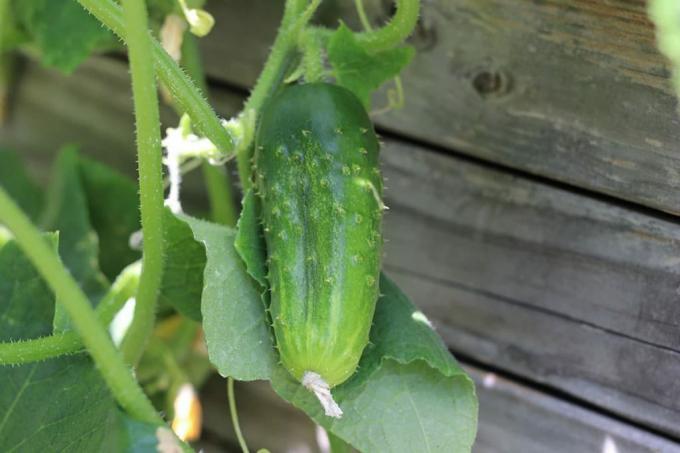
- annual cucurbits (Cucurbitaceae)
- Pre-culture in the house
- Direct sowing outdoors from mid-May
- Sheltered, sunny, warm and humid places
- loose soils rich in nutrients and humus
- pour regularly with lukewarm water
Tip: A mixed culture with chives reduces the occurrence of in this neighbor Downy mildew noticeably.
K to M
Chamomile (Matricaria chamomilla)

- annual, aromatic-smelling sunflower (Asteraceae)
- Growth height 30 to 50 cm
- white flowers from May to August
- full sun place
- slightly loamy, humus-rich soils
- water and fertilize regularly
- Sow from April, light germination
Nasturtium (Tropaeolum majus)

- annual
- Height of growth 30 to 200 cm
- yellow, orange, red flowers from June to October
- sunny to partially shaded, sheltered places
- soils not too rich in nutrients
- water regularly, fertilize little
- Direct sowing outdoors from mid-May
Chervil (Anthriscus cerefolium)

- annual herb
- Growth height up to 60 cm
- white flowers from May to September
- bright, partially shaded to shady
- moist, nutritious soils
- water evenly, fertilize moderately
- Direct sowing outdoors at the end of March
Note: This neighbor of chives can easily be infected with the poisonous hemlock (Conium maculatum) be confused.
Kohlrabi (Brassica oleracea var. gongylodes)

- Central Eater
- sunny to partially shaded place
- humus-rich, moist soils
- Preculture from the end of March
- Direct sowing outdoors in mid-April
- short cultivation time
May turnips (Brassica rapa subsp. rapa var. majalis)
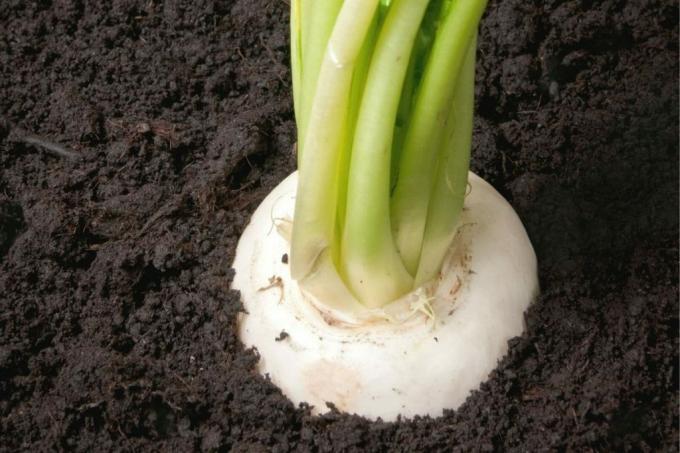
- two-year-old plants
- Weak eaters
- sunny to partially shaded place
- light humus soils
- Direct sowing May to August
Marjoram (Origanum majorana)

- hardy culinary and medicinal herbs
- Growth height 20 to 40 cm
- white, red, purple flowers from June to September
- sunny places
- permeable, nutrient-rich soils
- Water sparingly, fertilize moderately
- Sow from March, light germination
Swiss chard (Beta vulgaris)

- biennial culture
- Growth height up to 50 cm
- sunny to partially shaded
- nutrient-rich, humus-rich, well-drained soil
- Direct sowing outdoors from April to June
Carrots (Daucus carota)
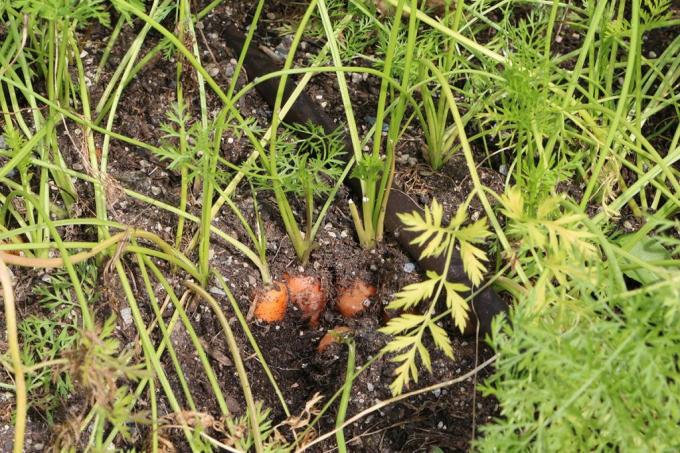
- annual umbelliferae (Apiaceae)
- red-yellow to orange-colored root tubers
- warm, sunny to partially shaded
- loose, humus-rich, deep soil
- Direct sowing from March to the end of June
- Keep the soil evenly moist
Tip: A mixed culture with chives will help deter the carrot fly, the main carrot pest, in most cases.
O to R
Oregano (Origanum vulgare)

- perennial, hardy medicinal and culinary herb
- Growth height 50 to 100 cm
- white to pink flowers from June to September
- sunny and sheltered place
- nutrient-rich, dry, well-drained soils
- Direct sowing from May
Parsnips (Pastinaca sativa)
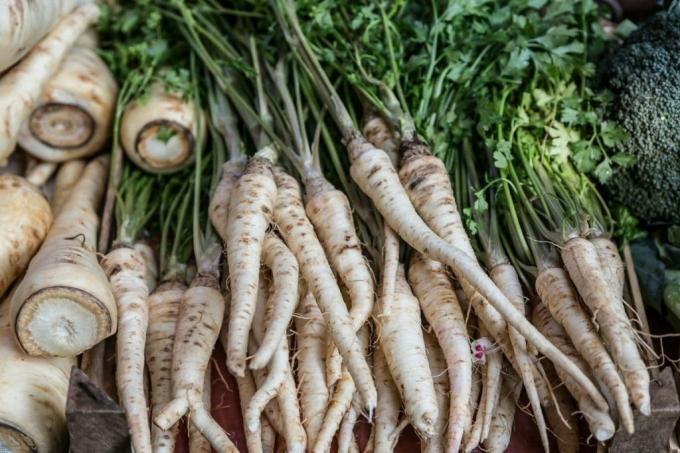
- biennial root vegetables
- Yellow-white turnip 6 cm thick
- Length 40 cm
- sunny to partially shaded
- deep, humus-rich, loose soil
- Sow from March
Parsley (Petroselinum crispum)

- biennial herb
- Growth height 30 to 100 cm
- greenish flowers from May to July
- sunny to partially shaded
- humus-rich, deep, moist soils
- water regularly
- Direct sowing from mid-March to mid-July
Pimpernelle (Sanguisorba minor)
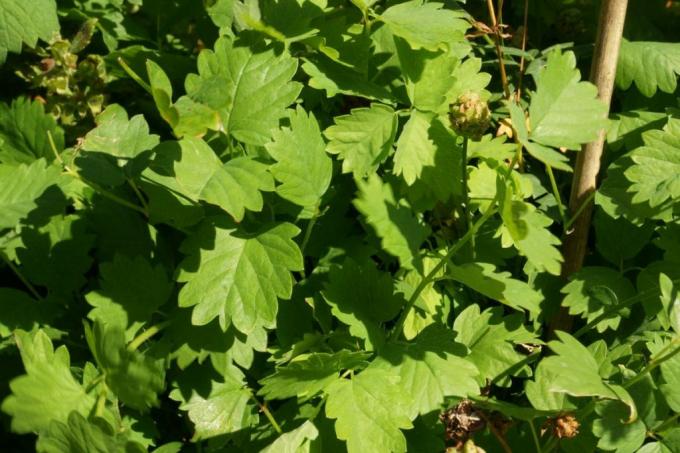
- also Little Wiesenknopf
- herbaceous, perennial plant
- Growth height 20 to 100 cm
- green to reddish flowers from July to August
- sunny, sheltered place
- well-drained, slightly calcareous, humus-rich soils
- Direct sowing from March
Radicchio (Cichorium intybus var. foliosum)

- two-year-old, usually only cultivated for one year
- strong taproot
- sunny to partially shaded
- loose, humus and nutrient-rich soils
- Weak eaters
- Sowing from May to August, depending on the variety
Radishes (Raphanus sativus var. sativus)
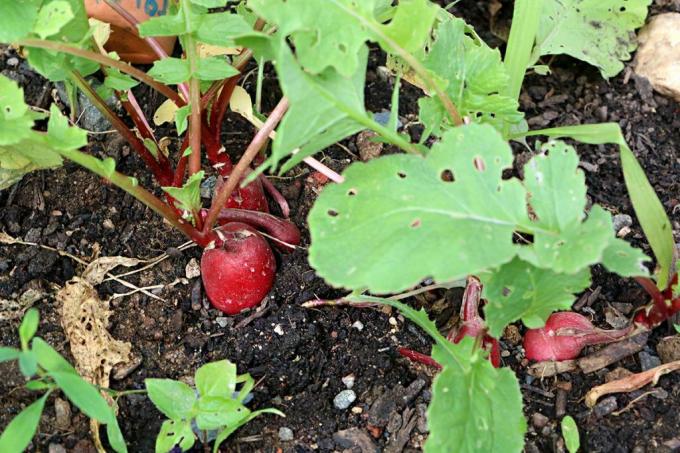
- annual cruciferous family (Brassicaceae)
- sunny to partially shaded
- loose, humus soil
- Direct sowing from mid-March continuously until the beginning of September
- always at intervals of two to three weeks
Radish (Raphanus sativus)
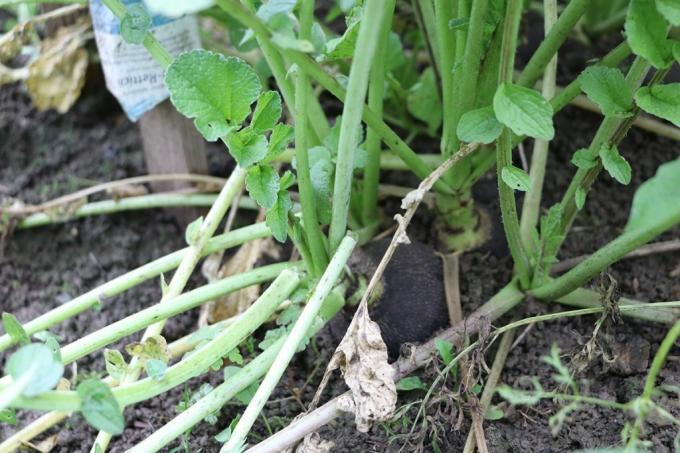
- biennial cruciferous plant
- elongated turnip, predominantly in the ground
- sunny to partially shaded
- loose, humus, fresh soil
- Direct sowing in subsequent crops from March to July
Marigold (Calendula officinalis)
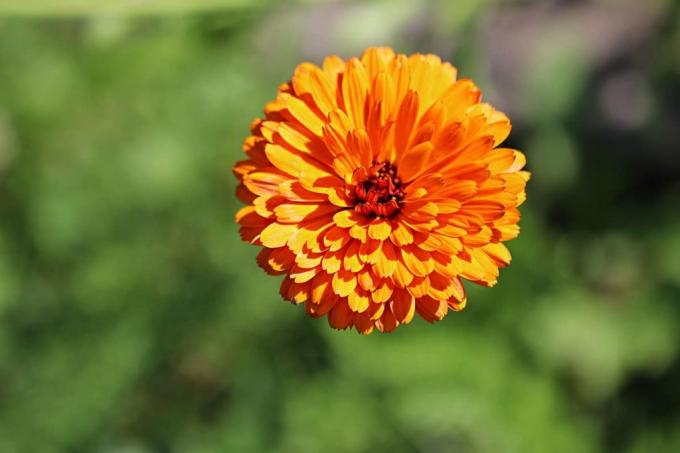
- annual
- Growth height up to 70 cm
- yellow to orange flowers from June to September
- sunny places
- well drained, moist, nutrient-rich soils
- avoids downy mildew
- Sow in April
Rocket (Eruca sativa)
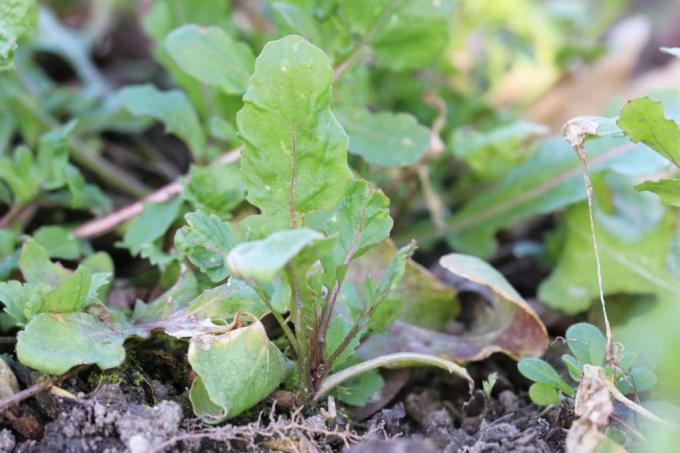
- also rocket
- Cultivated as an annual, actually a biennial plant
- sunny to partially shaded
- fresh, loose soil
- Direct sowing from the end of March to September
S to Z
Sage (Salvia officinalis)

- perennial, hardy subshrub
- Height of growth 30 to 60 cm
- blue flowers from July to September
- sunny, sheltered place
- well drained, nutrient-rich, calcareous soils
- Preculture from the beginning of April
- Direct sowing in May
Lettuce (Lactuca sativa)

- annual
- sunny to partially shaded
- humic, loose, fresh soil
- Direct sowing, depending on the variety, from March to August
- Preculture also possible from the end of March
Celery (Apium graveolens)
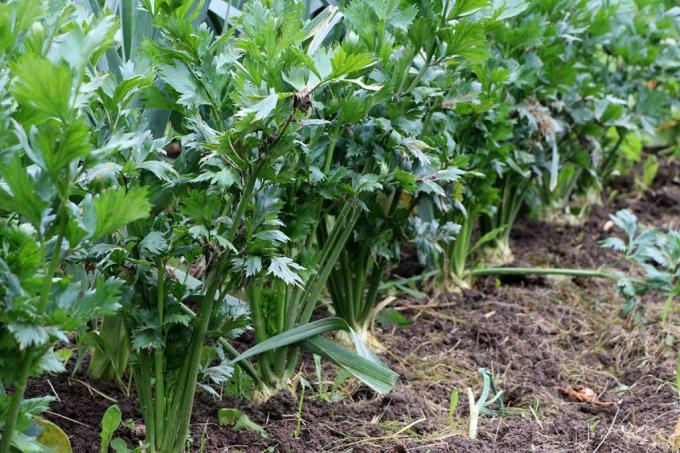
- different types: tubers, - sticks, - celery
- Growth height 50 to 100 cm
- sunny place
- soil rich in nutrients and humus
- should store water well
- Preculture from March
- Plant out from May
Spinach (Spinacia oleracea)

- annual
- Growth height 10 to 30 cm
- sunny to partially shaded
- humic, fresh soil
- Direct sowing, depending on the variety, from March to the end of November
Thyme (thymus vulgaris)
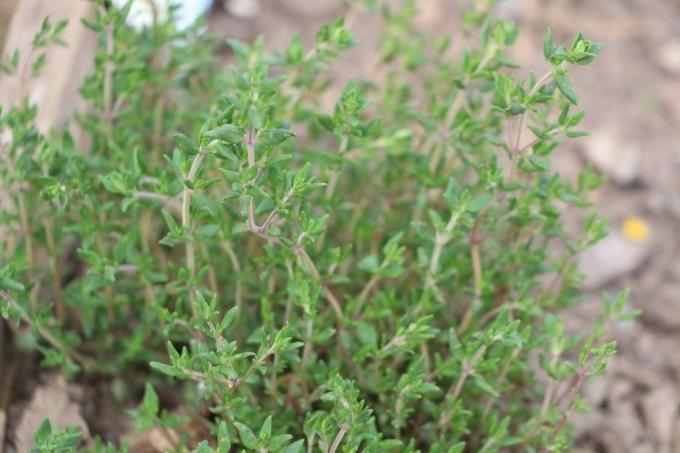
- perennial, hardy herb
- Height of growth 5 to 30 cm
- white to pink flowers from June to August
- sunny, protected from rain and wind
- dry, somewhat calcareous, well-drained soil
- Direct sowing outdoors from April
Tomatoes (Solanum lycopersicum)
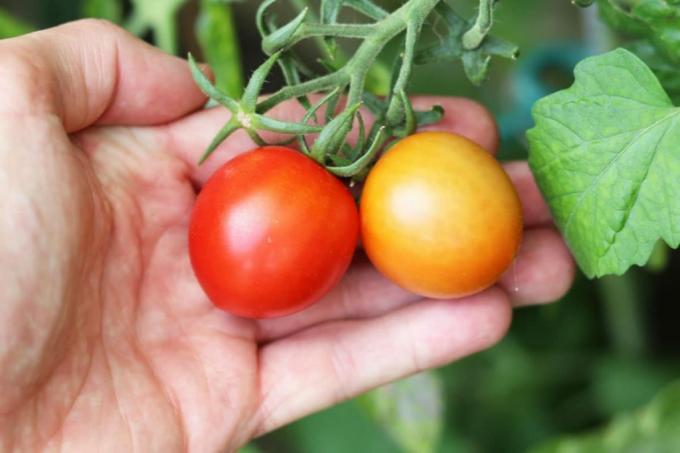
- annual nightshade family (Solanaceae)
- bushy or tall
- full sun, warm, sheltered place
- very nutritious and humus rich soils
- Preculture from the end of February at 20 ° C
- Plant out from mid-May
- also direct sowing outdoors from mid-May
Wormwood (Artemisia absinthium)
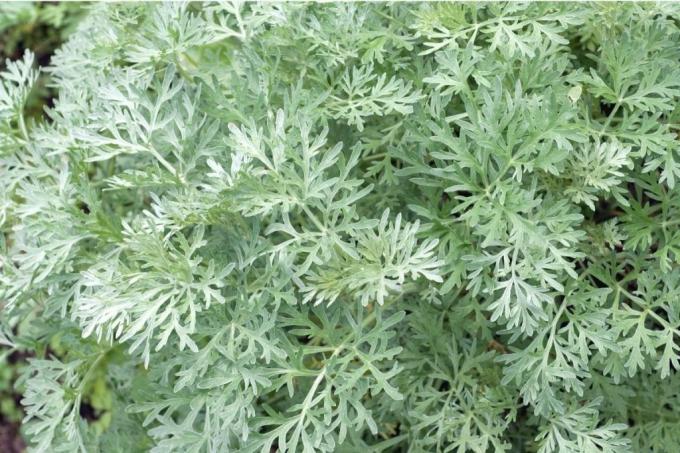
- perennial herbaceous plant
- Height of growth 60 to 100 cm
- yellowish flowers from July to August
- sunny to partially shaded
- calcareous, nutrient-poor soil
Hyssop (hyssopus officinalis)

- perennial medicinal and aromatic plant
- Height of growth 30 to 60 cm
- blue flowers from June to August
- sunny and sheltered from the wind
- well-drained, loose, humus-rich, slightly calcareous soil
- Preculture from March
- Plant out from mid-May
Lemon balm (Melissa officinalis)
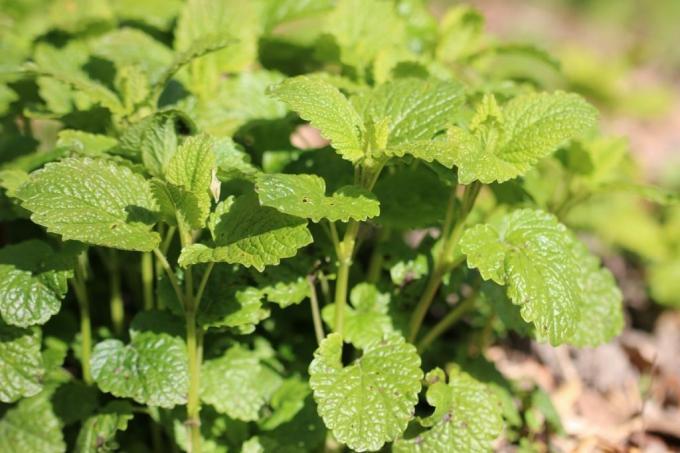
- hardy medicinal and culinary herb
- Growth height 30 to 90 cm
- white flowers from July to August
- sunny to partially shaded
- light, humus-rich and moist soils
- Direct sowing in May
Bad neighbors for chives
In addition to good plant neighbors for the chives, there are also bad neighbors. These can negatively affect the growth and health of the leek family. Such neighbors include, among others
- Beans (Phaseolus vulgaris)
- Broccoli (Brassica oleracea var. italica)
- Peas (Pisum sativum)
- Garden cress (Lepidium sativum)
- Head cabbage (Brassica oleracea convar. capitata)
- Coriander (Coriandrum sativum)
- Beetroot (Beta vulgaris)
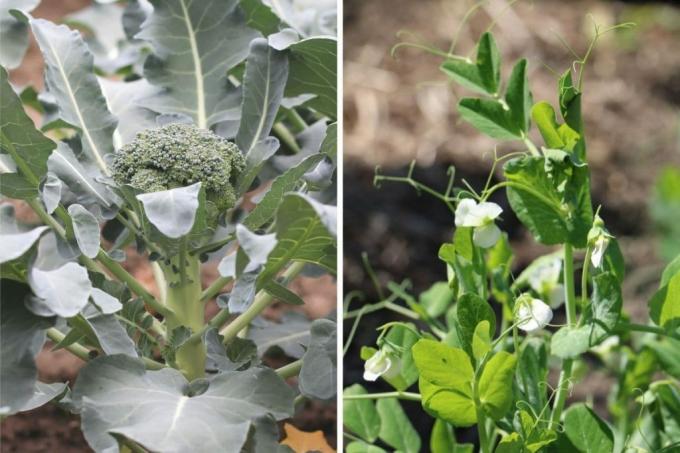
frequently asked Questions
In a mixed culture, different plants are grown at the same time on a certain area. These have the most varied of needs and can, however, influence each other positively in terms of growth. On the one hand, space is saved and, on the other hand, soil leaching is prevented, as the plants draw their nutrients from different soil depths.
The leek plant is frost and winter hardy. As a result, no winter protection is necessary. However, chives planted in pots should be watered a little on frost-free days, otherwise they can dry out quickly.
Sowing can be done from March to July at a soil temperature of 18 ° C. The soil must be thoroughly loosened and enriched with sand and compost. The best thing to do is to mix the seeds with sand and then sown them in grooves. As a dark germ, it is covered with a one to two centimeter thick layer of earth. Germination takes place after 14 days.



